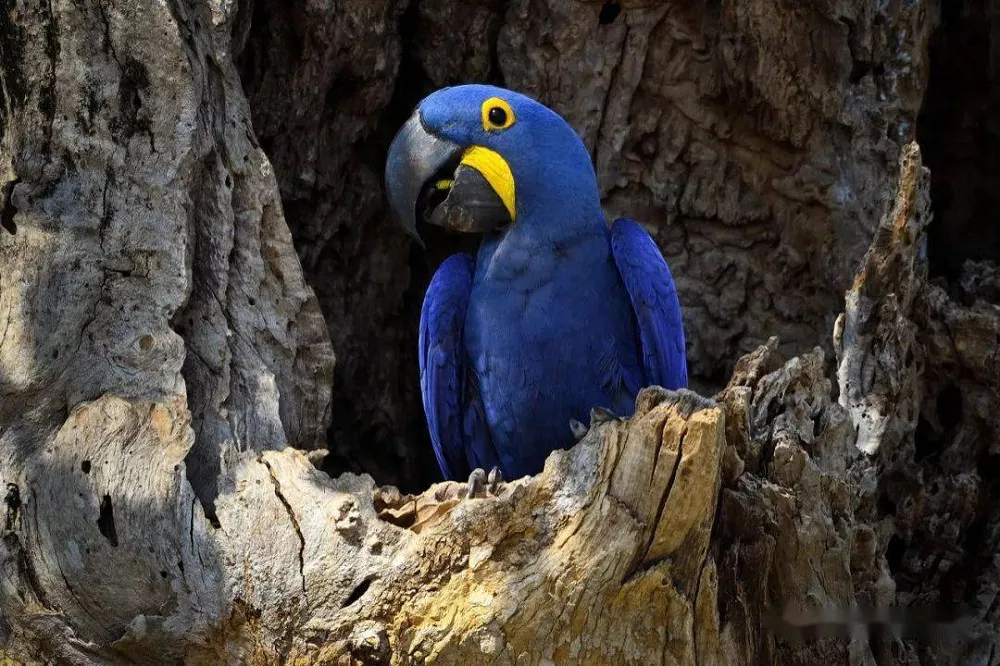The Hyacinth Macaw is one of the largest species of parrots in the world, prized for its striking blue plumage and powerful beak. This majestic bird is native to South America, where it can be found in a variety of habitats across several countries.
Distribution and Range
The Hyacinth Macaw is found primarily in Brazil, where it is most commonly found in the Pantanal region, which spans the borders of Brazil, Bolivia, and Paraguay. Within Brazil, the birds are also found in other regions such as the Amazon Basin and the Cerrado, a savannah-like region with scattered trees that covers much of central Brazil.
The range of the Hyacinth Macaw extends beyond Brazil, however. The birds can also be found in parts of Bolivia and Paraguay, as well as in pockets of Argentina. In these countries, the birds are typically found in similar habitats, such as the wetlands and savannahs that make up much of the surrounding landscape.
Habitat
Hyacinth Macaws are known for their adaptability when it comes to habitat. They can live in a variety of environments, from rainforests to grasslands, and even in areas that have been disturbed by human activity. However, they do require certain elements in order to thrive.
One of the key components of the Hyacinth Macaw’s habitat is tall trees. These birds nest in tree cavities, and need large, sturdy trees to provide them with suitable homes. They also rely on these trees to provide food, in the form of nuts and seeds.
Another important aspect of the Hyacinth Macaw’s habitat is water. These birds require access to bodies of water, whether it be a river, lake, or pond, in order to drink and bathe. In the Pantanal region, where the birds are most common, they can be found near the many rivers and wetlands that make up the landscape.
Threats to Habitat
Unfortunately, the habitat of the Hyacinth Macaw is under threat. Deforestation, particularly in Brazil, is one of the biggest threats facing these birds. As trees are cut down for agriculture or other purposes, the birds lose their nesting sites and sources of food. In addition, the fragmentation of the remaining forested areas makes it harder for the birds to find suitable habitats.
Other threats to the Hyacinth Macaw’s habitat include hunting and trapping for the pet trade, as well as competition with livestock for food and water. Efforts are being made to protect the birds and their habitats, but much work remains to be done in order to ensure their continued survival.
Conservation Efforts
Several conservation organizations are working to protect the Hyacinth Macaw and its habitat. One such organization is the Hyacinth Macaw Project, which operates in the Pantanal region of Brazil. The project works to protect nesting sites, monitor populations, and educate local communities about the importance of conservation.
Other organizations, such as the World Parrot Trust and the Wildlife Conservation Society, also work to protect the Hyacinth Macaw and its habitat. These organizations engage in research, advocacy, and outreach efforts to raise awareness about the threats facing these birds and to promote conservation measures.
Conclusion
The Hyacinth Macaw is a magnificent bird that is native to South America. Found primarily in Brazil, the bird can also be found in parts of Bolivia, Paraguay, and Argentina. This bird requires tall trees and access to water in order to survive, but its habitat is under threat from deforestation, hunting, and competition with livestock. Conservation efforts are underway to protect this beautiful bird and its habitat, but much more work needs to be done to ensure its continued survival.
Related topics:


 Facebook
Facebook  Instagram
Instagram  Youtube
Youtube 